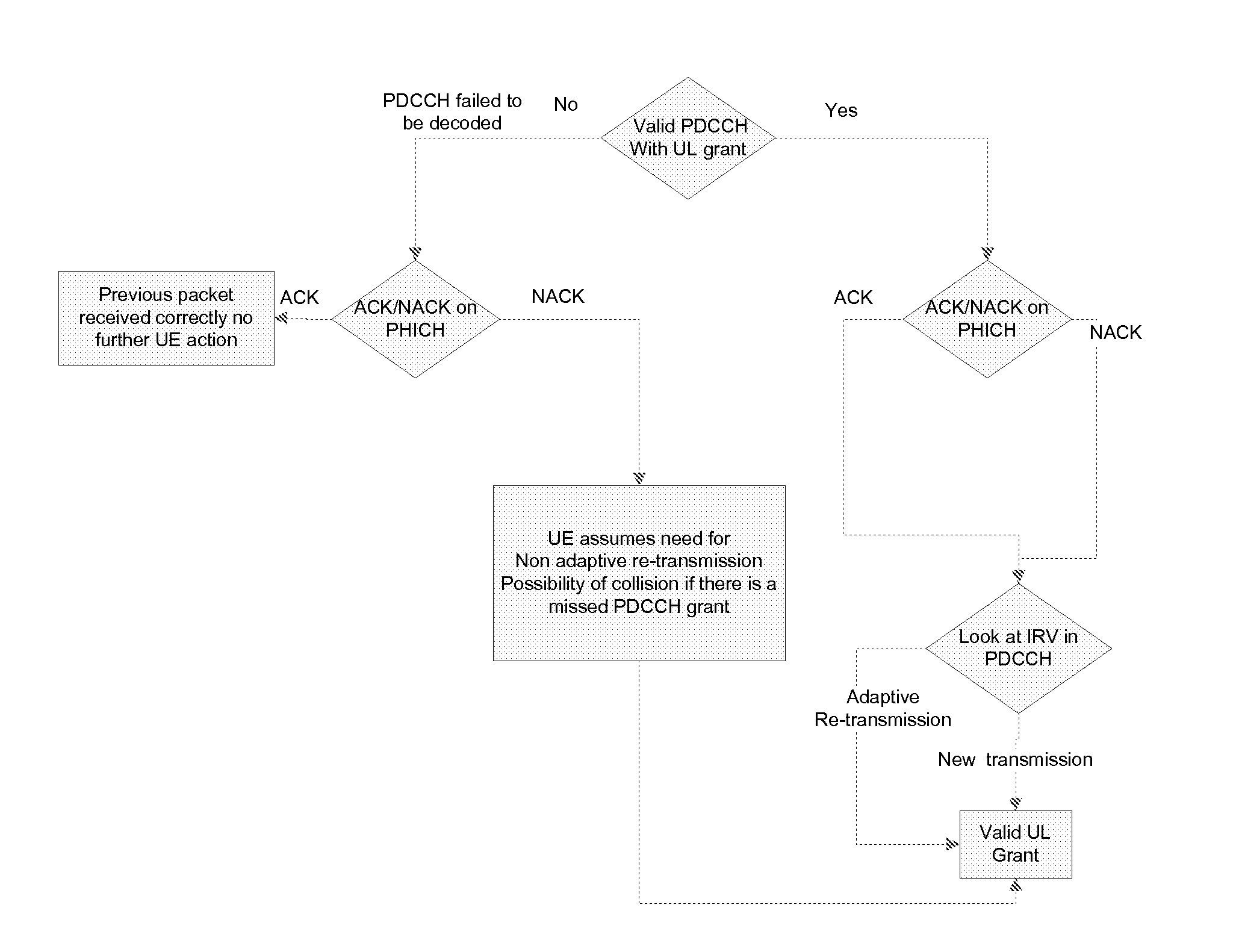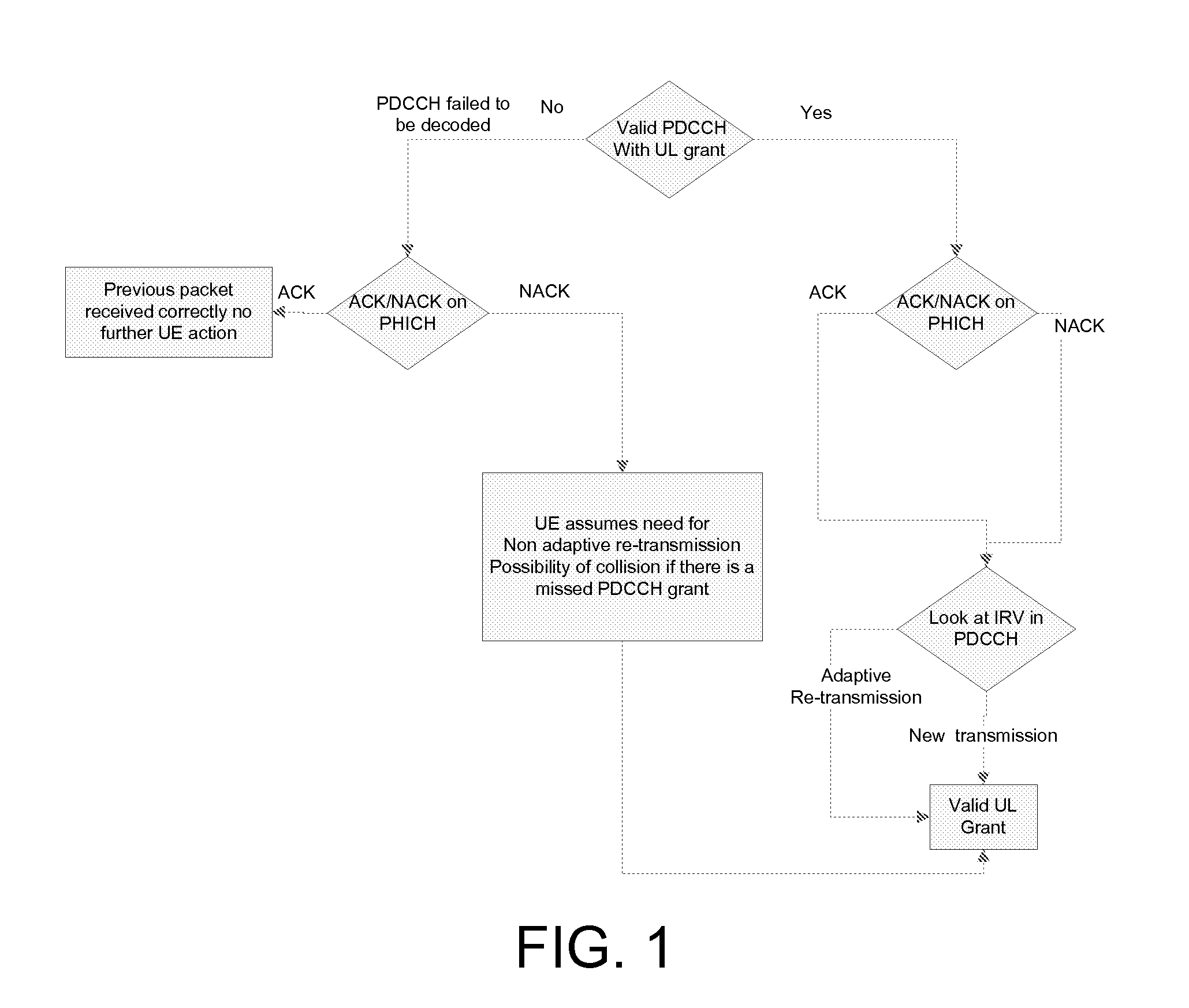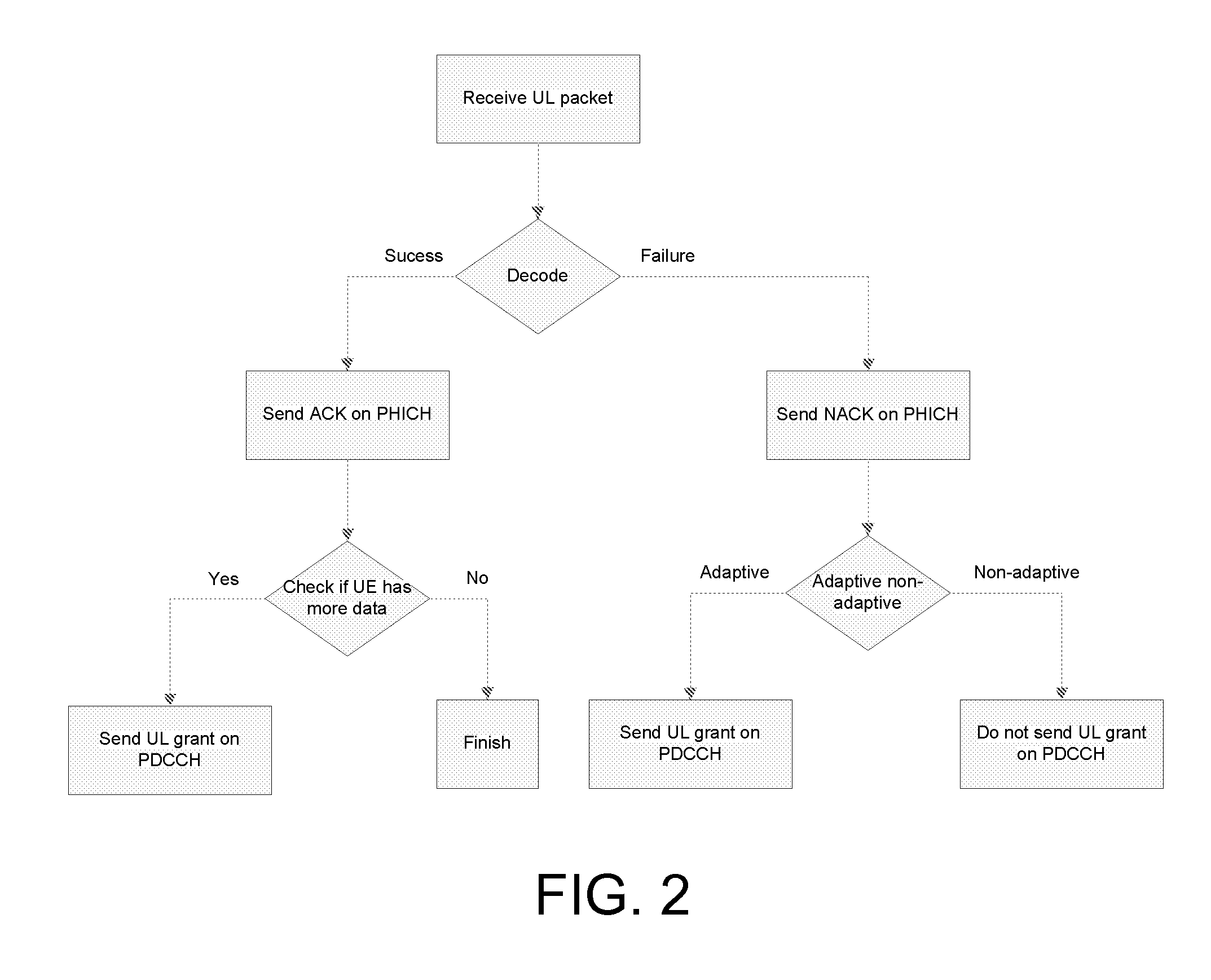Method of exchanging data between a base station and a mobile station
- Summary
- Abstract
- Description
- Claims
- Application Information
AI Technical Summary
Benefits of technology
Problems solved by technology
Method used
Image
Examples
first embodiment
[0060]This first embodiment shows the eNB processing where ACK is used as indicator of PDCCH presence and NACK is used as an indicator of PDCCH absence which means that non-adaptiveness is required.
[0061]In more detail, in a first step, the eNB receives an uplink packet. Then, it decodes said uplink packet.
[0062]If the decoding has been successful, the eNB sends an ACK on the PHICH. Then it checks if the UE has more data. If this is the case, the eNB may send an uplink grant on the PDCCH; if not then the process is terminated. Note that the check of whether the UE has more data to transmit may have been performed at an earlier stage in the process. Note also that the eNB may decide not to send an uplink grant even if the UE does have more data to send, for example in the case when other UEs have higher-priority data to send. Therefore the decision stage “Check if UE has more data” may in some embodiments be described as “Decide whether to grant further uplink transmission resources”...
second embodiment
[0065]This second embodiment shows one possible processing in the UE, where the ACK / NACK channel information is processed after the PDCCH. In this case when the ACK / NACK signal is a NACK and there was no explicit UL grant then a non-adaptive re-transmission will occur. If the there is an ACK on the PHICH but no explicit uplink grant, then this is an indication that the grant may have been missed.
[0066]In more detail, the UE looks for a valid PDCCH with an UL grant. If the PDCCH has been correctly decoded, then there is no need to read ACK / NACK on PHICH and the UE looks at IRV to determine whether the eNB requires an adaptive retransmission of the previous packet or an initial transmission. The UE then concludes that it has a valid UL grant to carry out the determined transmission.
[0067]If the PDCCH failed to be decoded, then the UE looks for ACK / NACK on PHICH. If ACK, an UL grant may have been missed. If NACK, the UE determines that there is no explicit UL grant on PDCCH and that a ...
third embodiment
[0069]This third embodiment shows the eNB processing for the case when the eNB sends an
[0070]ACK as an indicator of the presence of PDCCH and a NACK as an indicator of PDCCH absence. In this case there is a new signal sent to the UE to stop the UE from transmitting in the Uplink, which effectively (by for example sending a zero grant) prevents a further uplink transmission in the next corresponding TTI.
[0071]In more detail, in a first step, the eNB receives an uplink packet. Then, it decodes said uplink packet.
[0072]If the decoding has been successful, the eNB sends an ACK on the PHICH. Then it checks if the UE has more data. If this is the case, the eNB may send an uplink grant on the PDCCH; if not then the eNB sends a zero uplink grant on the PDCCH. Note that the check of whether the UE has more data to transmit may have been performed at an earlier stage in the process. Note also that the eNB may decide to send a zero uplink grant even if the UE does have more data to send, for e...
PUM
 Login to View More
Login to View More Abstract
Description
Claims
Application Information
 Login to View More
Login to View More - R&D
- Intellectual Property
- Life Sciences
- Materials
- Tech Scout
- Unparalleled Data Quality
- Higher Quality Content
- 60% Fewer Hallucinations
Browse by: Latest US Patents, China's latest patents, Technical Efficacy Thesaurus, Application Domain, Technology Topic, Popular Technical Reports.
© 2025 PatSnap. All rights reserved.Legal|Privacy policy|Modern Slavery Act Transparency Statement|Sitemap|About US| Contact US: help@patsnap.com



